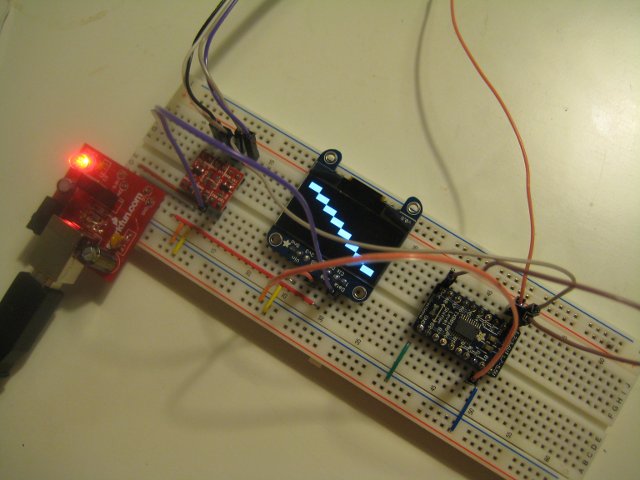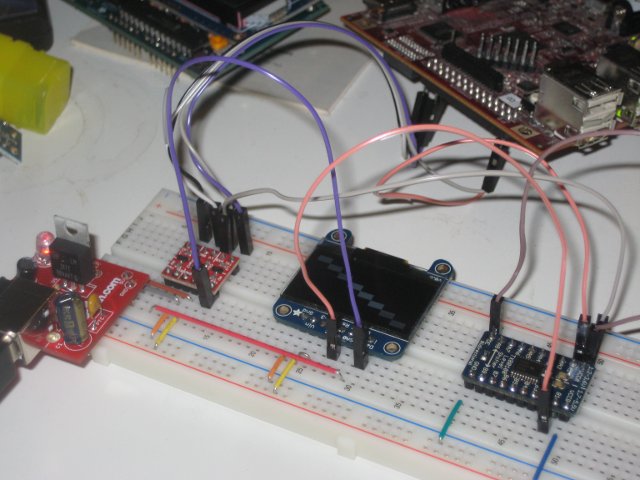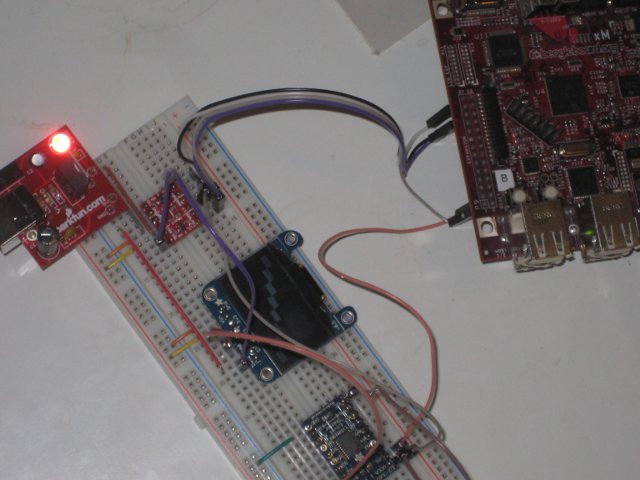 pmeerw's blog
pmeerw's blog
 pmeerw's blog
pmeerw's blog
Aug 2012
IIO is a Linux subsystem intended to support reading sensors (or some kind of analog-to-digital convertors) including accelerometers, gyros, temperature/pressure/light sensors. It recently left staging (November 2011).
Reading sensor values via IIO can be done directly or in buffered mode. The later requires setup of a trigger.
Here is the script I use to test an Linux IIO driver I'm developping for the Si1143 ambient light/proximity sensor:
# load necessary modules modprobe industrialio modprobe iio-trig-sysfs modprobe kfifo_buf modprobe industrialio-triggered-buffer # reload driver rmmod si114x_new insmod si114x-new.ko # register new i2c device echo si114x 0x5a > /sys/devices/platform/omap_i2c.2/i2c-2/new_device # proximity reading (direct) cat /sys/bus/iio/devices/iio:device0/in_proximity0_raw # add new IIO sysfs trigger echo 123 > /sys/bus/iio/devices/iio_sysfs_trigger/add_trigger echo sysfstrig123 > /sys/bus/iio/devices/iio:device0/trigger/current_trigger # enable some channels echo 1 > /sys/bus/iio/devices/iio:device0/scan_elements/in_proximity0_en echo 1 > /sys/bus/iio/devices/iio:device0/scan_elements/in_intensity_en echo 1 > /sys/bus/iio/devices/iio:device0/scan_elements/in_temp_en # enable scan buffer echo 100 > /sys/bus/iio/devices/iio:device0/buffer/length echo 1 > /sys/bus/iio/devices/iio:device0/buffer/enable # trigger to read data echo 1 > /sys/bus/iio/devices/trigger0/trigger_now # read the captured data (buffered) cat /dev/iio\:device0 > /tmp/data.bin
posted at: 11:56 | path: /projects | permanent link
Tried to connect the Adafruit Monochrome 1.3" 128x64 OLED graphic display to a
beagleboard-xm using the following pins on the main expansion header:
27 - GND
23 - SDA
24 - SCL
4 - GPIO 144 (UART2_CTS)
1 - 1.8 V
First, mount the debug file system
mount -t debugfs none /sys/kernel/debug,
mux the pin to GPIO output
devmem 0x48002174 16 0x0004,
and check the result:
# cat uart2_cts name: uart2_cts.gpio_144 (0x48002174/0x144 = 0x0004), b ab26, t NA mode: OMAP_PIN_OUTPUT | OMAP_MUX_MODE4 signals: uart2_cts | mcbsp3_dx | gpt9_pwm_evt | NA | gpio_144 | NA | NA | safe_mode
Next, make GPIO144 accessible
echo 144 > /sys/class/gpio/export,
set the GPIO direction to output
echo out > /sys/class/gpio/gpio144/direction,
and set the output value to high
echo 1 > /sys/class/gpio/gpio144/value.
Finally, we can program the SSD1306 controller (following Adafruit example):
# reset echo 1 > /sys/class/gpio/gpio144/value echo 0 > /sys/class/gpio/gpio144/value echo 1 > /sys/class/gpio/gpio144/value
# initialize i2cset -y 2 0x3d 0x00 0xae # display off i2cset -y 2 0x3d 0x00 0xd5 # clockdiv i2cset -y 2 0x3d 0x00 0x80 i2cset -y 2 0x3d 0x00 0xa8 # multiplex i2cset -y 2 0x3d 0x00 0x3f i2cset -y 2 0x3d 0x00 0xd3 # offset i2cset -y 2 0x3d 0x00 0x00 i2cset -y 2 0x3d 0x00 0x40 # startline i2cset -y 2 0x3d 0x00 0x8d # charge pump i2cset -y 2 0x3d 0x00 0x14 i2cset -y 2 0x3d 0x00 0x20 # memory mode i2cset -y 2 0x3d 0x00 0x00 i2cset -y 2 0x3d 0x00 0xa1 # segregmap i2cset -y 2 0x3d 0x00 0xc8 # comscandec i2cset -y 2 0x3d 0x00 0xda # set com pins i2cset -y 2 0x3d 0x00 0x12 i2cset -y 2 0x3d 0x00 0x81 # contrast i2cset -y 2 0x3d 0x00 0xcf i2cset -y 2 0x3d 0x00 0xd9 # precharge i2cset -y 2 0x3d 0x00 0xf1 i2cset -y 2 0x3d 0x00 0xdb # vcom detect i2cset -y 2 0x3d 0x00 0x40 i2cset -y 2 0x3d 0x00 0xa4 # resume i2cset -y 2 0x3d 0x00 0xa6 # normal (not inverted) i2cset -y 2 0x3d 0x00 0xaf # display on
# transfer frame buffer data i2cset -y 2 0x3d 0x40 0xff 0xff 0xff 0xff 0xff 0xff 0xff 0xff 0xff 0xff 0xff 0xff 0xff 0xff 0xff 0xff i i2cset -y 2 0x3d 0x40 0 0 0 0 0 0 0 0 0 0 0 0 0 0 0 0 i ...



posted at: 23:03 | path: /projects | permanent link
The Silabs IR Gesture USB HID Reference Design was lacking Linux support... here is some Linux sample code!
I'm using the HID API multi-platform library, available from http://www.signal11.us/oss/hidapi/, to access the cp2112 HID USB bridge and the si1143 sensor connected via SMBus/I2C.
posted at: 22:53 | path: /projects | permanent link